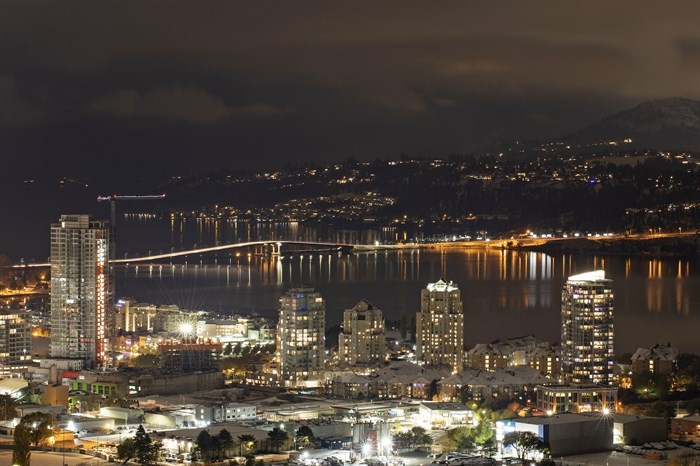Kelowna leaning into dense urban neighbourhoods: study
More people in Kelowna are choosing to live the classic urban lifestyle by switching to rentals in densely populated areas and travelling by bike or public transit.
A study by the City of Kelowna into its Transportation Master Plan looked at how people are living and moving around. City council will hear the report on the study at a meeting Monday, June 9.
The study found that rental housing tenure went up from 26 per cent in 2023 to 51 per cent in 2024.
Building permits in the city’s urban centres and core, like downtown and Pandosy, were four times higher than the rest of the city. Eighty per cent of permits were in the city’s centre and only 20 per cent in the rest of Kelowna.
More permits means more people are likely to move into the core, and the city is trying to hit provincial housing targets set out in Bill 44. The city surpassed its target of 1,363 new housing units by building 1,501 in 2024.
“Strong building permit approvals in 2024 will likely result in increased occupancies in 2026-2027. The future impacts of Bill 44 will be monitored in the coming years to determine the extent to which it affects this type of housing supply,” the report read.
BC Stats expects the Central Okanagan population to grow to roughly 350,000 people by 2040, and Kelowna’s population is expected to hit 180,000 by 2040.
READ MORE: Strawberry dilemma: Buy cheap American or more pricey Okanagan grown
“Innovation and new technologies are helping reduce congestion and emissions,” the report read.
Transit ridership is at an all-time high, according to the study. Ridership rose from 6.1 million bus boardings in 2023 to 6.4 million boardings in 2024.
Bike trips have also increased by 42 per cent since 2018 to 6.4 million rides in 2024. The study also found that shared e-scooters and e-bikes like Lime replaced 556,000 kilometres of vehicle travel in 2024.
The report said that it might take more time for trends to reveal themselves more clearly.
“This is only the third year of reporting, so it may take some time before clear trends emerge,” the report read.
For those concerned that urbanization is going to impact farmland in the city, there were no agricultural properties rezoned in 2024 and 28.7 per cent of Kelowna is being actively farmed.
New builds like the Bernard Block in downtown have added to the office vacancy rate which is at 8.8 per cent. The industrial vacancy rate is also on the rise and hit 5.6 per cent.
The city intends on using the data to inform its policy on transportation and development.
To contact a reporter for this story, email Jesse Tomas or call 250-488-3065 or email the editor. You can also submit photos, videos or news tips to the newsroom and be entered to win a monthly prize draw. Find our Journalism Ethics policy here.
We welcome your comments and opinions on our stories but play nice. We won't censor or delete comments unless they contain off-topic statements or links, unnecessary vulgarity, false facts, spam or obviously fake profiles. If you have any concerns about what you see in comments, email the editor in the link above. SUBSCRIBE to our awesome newsletter here.




